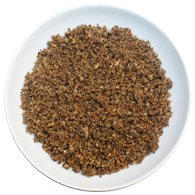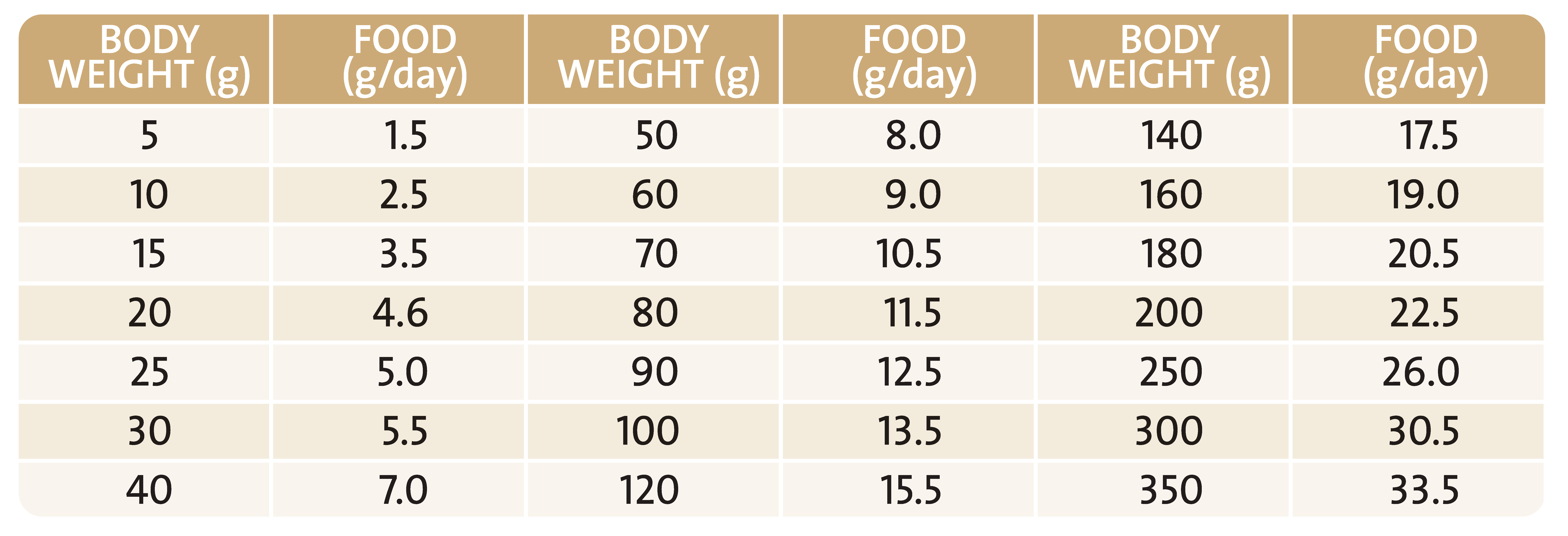Nutritionally-balanced live food substitute for sugar gliders, carnivorous marsupials, ferrets and other animals which include insects or meat as a part of their diet.
Key Features
- Live Food Replacer – with essential vitamins, calcium, minerals and fatty acids.
- High in Protein – with essential amino acids for good fur & muscle condition.
- Added Taurine – an essential nutrient for carnivores.
Download Data Sheet

Serving suggestion – made up as moist crumble
Ingredients
Meat meal, fish meal, blood meal, whey protein, soy protein, lysine, methionine, vegetable oils, omega-3 and omega-6 fatty acids, carotenoids, taurine, vitamins A, B1, B2, B3, B5, B6, B9, B12, C, D3, E, K, biotin, choline, calcium, phosphorus, potassium, sodium, magnesium, zinc, iron, manganese, copper, iodine, selenium, 1g/kg Actigen® dried yeast prebiotic.
Typical Analysis
| Protein |
38% |
| Fat |
12% |
| Ash |
10% |
| Moisture |
7% |
| Energy (ME) |
16 MJ/kg |
Pack Sizes
250g, 1kg & 5kg.
Preparing Small Carnivore Food
Mix 3 parts powder (15g) to 2 parts water (10ml).
Slowly add the water, while mixing to form a moist crumbly food. Do not make into a paste. Store prepared food refrigerated for 1 day or frozen for 1 week.

Dunnarts, Antechinus, Kowari & Quolls
Small Carnivore Food can represent upto 80% of the total diet. Supplement with crickets, moths, grasshoppers, spiders and day old mice or chicks.
Gliders, Pigmy Possums & Bandicoots
Small Carnivore Food can represent upto 20% of the total diet. Also feed Wombaroo High Protein Supplement dispersed over fruit.
Hopping mice, Rats & Mice
Small Carnivore Food can represent 10-20% of the total diet.
Ferrets
Small Carnivore Food can represent 10-20% of the total diet. Powder can be used to top dress wet food - mix in well.
Echidna & Numbat
Mix prepared Small Carnivore Food with about 10% crushed termite mound and termites.
Insectivorous Bats
Insectivorous bats have been successfully kept using this food as a maintenance diet, while supplementing them with moths, beetles and a few fly pupae or mealworms.
Feed Estimates using Small Carnivore Food

Feeding Live Food
Carnivorous and omnivorous animals usually catch live food prey items. Feeing live food is not only important nutritionally, but also helps maintain natural foraging behaviour in captive animals. If insects are offered as live food, ensure they represent the insect stage eaten by the animal in the wild. There are considerable differences in composition between mature and immature (larval stage) of insects. Animals that prey on mature insects such as moths, beetles and crickets should not be fed large numbers of larval stage insects. Captive animals are commonly fed meal worms and fly pupae which are larval stage insects. These can be poor food substitutes for many animals because of their high fat content. Fat contains twice the energy as other nutrients and increased quantities in the diet can not only lead to obesity but significantly dilute the intake of essential nutrients. The nutritional value of feeder insects may be improved by maintaining them on Passwell Insect Booster.






